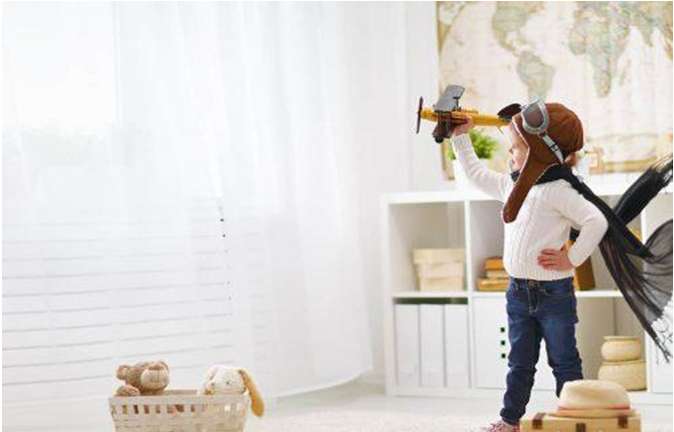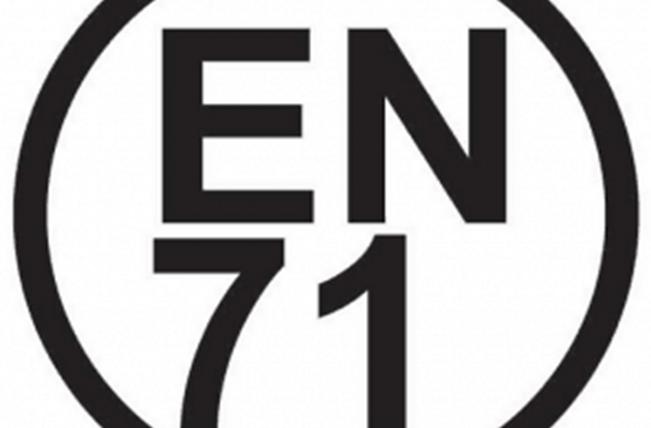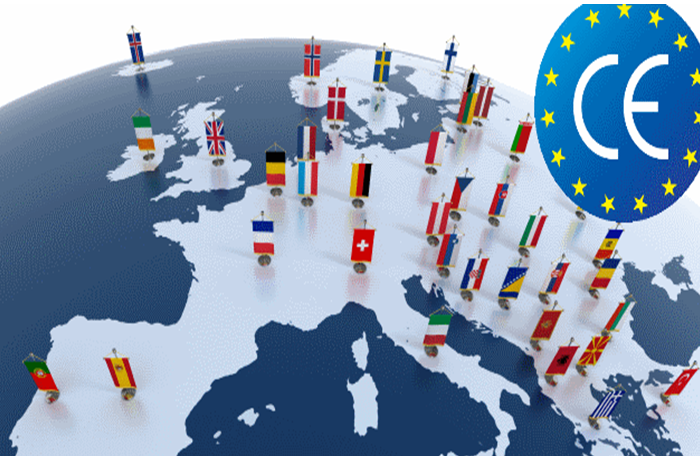Quality standards for toys
Published :
11/11/2019 09:15:47
Categories :
Advice from psychologists on raising a child
, List of all pediatricians by city
, Video tips from pediatricians
Games and toys are essential for the proper development of children. Playing, they get to know the big and colourful world, develop their senses, learn to build relationships with their peers and fit into society.
As parents, you know this and you strive to find the most interesting, educational, fun, but also quality children's play items for your little ones.
How to make sure that the toys you buy are not only appropriate but also completely safe for the kids?
20-30 years ago, any manufacturer, importer, and supplier could offer articles intended for children without considering whether they were safe for children. The good news is that this is completely unthinkable today.
Today, every toy that is commercially available in the EU (including in our country) must have passed a number of tests, be certified EN71, and CE marked.
Important quality certificates for toys that you are familiar with
As mentioned, specific rules exist in Bulgaria and throughout the EU to protect children from playing with toys that are dangerous to their health. There are also specific rules for ensuring the safety of baby products such as prams, cots, soothers, clothes, shoes, and adjustable equipment for children such as swings, slides, bicycles, etc., etc.
Most of these rules are based on standards developed by the European Committee for Standardization (CEN).
European quality and safety requirements for toys
Directive 2009/48 EC sets out a number of safety criteria that must be met before toys can be placed in the European market. The directive prohibits the placing in the market of toys that are not completely safe, do not hold the EN 71 certificate, and do not bear the CE marking.
What is an EN 71 certificate?
EN 71 is a set of European product safety certificates that applies to all toys sold in the EU.
EN 71 is part of the CoE Directive and aims to ensure that all toys sold in the EU meet certain minimum safety standards by the following factors:
● mechanical and physical properties;
● noise;
● fire resistance;
● chemical composition;
● electrical safety;
● radiation.
The EN 71 certificate has 13 sections that regulate the safety of toys.
What does this actually mean?
Any manufacturer who wants to be able to sell toys within the EU must perform tests on their products. If the tests are successful, they can obtain an EN 71 certificate. Depending on the type of toy, the EN 71 certificate tests are divided into 13 categories:
● EN 71: 1 - Mechanical and physical properties
● EN 71: 2 - Flammability
● EN 71: 3 - Specification for migration of certain elements
● EN 71: 4 - Experimental chemical kits and related activities
● EN 71: 5 - Chemical toys and kits other than experimental kits
● EN 71: 6 - Graphical symbols for the age warning labelling
● EN 71: 7 - Paints
● EN 71: 8 - Swings, slides and other similar toys for home games
● EN 71: 9 - Organic compounds - Requirements
● EN 71:10 - Organic compounds - Sample preparation and extraction
● EN 71:11 - Organic compounds - Methods and analysis
● EN 71:12 - N - Nitrosamines and N-Nitrogenous substances
● EN 71:13 - Cosmetics, board games, and more
● The most common tests of all 13 sections of EN 71 are EN 71: 1, EN 71: 2 and EN 71: 3, so we will pay more attention to them.
● At EN 71: 1 tests are carried out on the physical and chemical properties of toys. In other words, toys are tested to see if their mechanical or chemical characteristics can in any way injure the child while he or she is playing with them. The check includes a check for sharp edges, the presence of easily detachable parts of toys that can injure or be easily swallowed by the child.
● EN 71: 2 - Fire resistance
● The Toy Safety Directive 2009/48 EC requires that all toys and clothing be tested for flammability under EN 71: 2. Regulation EN 71: 2 addresses various factors that could lead to a child's injury due to inflammation. Tests include the determination of the presence of flammable materials prohibited for use in the manufacture of toys, a test of the ignition time of the toy, and the time at which the fire may spread and more.
● EN 71: 3 - Migration of certain elements
● EN 71: 3 limits the availability of free lead in toys and identifies eighteen toxic elements that are much more toxic and harmful than lead, but since they are cheaper some unscrupulous manufacturers could use them in the manufacture of toys.
● In June 2018, the European Committee for Standardization (CEN) published EN 71 - 3: 2013 + A3: 2018 (the new standard for the safety of toys in the "Migration of certain elements" section). The change is for lead migration limits and came into force on October 28, 2018.
CE marking
All products and toys marketed in the European Union must be CE marked.
What is CE marking?
Generally speaking, this is a certification mark that shows that toys and products meet the requirements of the applicable Toy Directives and Quality Standards. The marking should consist of the CE logo and the four-digit code of the notified body involved in the conformity assessment procedure.
This marking, also referred to as 'Conformité Européenne' (European Conformity), has been in force since 1989 and indicates that the manufacturer or importer is claiming compliance with the relevant EU legislation applicable to a product, regardless of the place of manufacture.
In other words, if the toy you like for your child bears a CE certification mark, it means that the manufacturer declares under their own responsibility that the toy has been manufactured in accordance with all EEA (European Economic Area) legal requirements and can be sold within the EU.
This marking is obligatory for all products and toys manufactured in the EEA (28 EU Member States plus Iceland, Norway and Liechtenstein, Switzerland and Turkey).
Products manufactured outside the EEA using the CE marking must ensure that they meet the quality standards for toys.
ISO standards
ISO 8124 "Toy Safety Standards": Harmonizing Global Safety Rules
ISO 8124 is a standard of the International Organization for Standardization and is generally a combination of EU EN 71 standard and US ASTM F963 standard. However, in contrast to these two standards, ISO 8124 emphasizes that responsibility for the quality and safety of toys is on the national markets.
And this standard, like EN 71, has several sections:
● ISO 8124 - 1: 2018 "Safety aspects related to mechanical and physical properties". The standard draws attention to the mechanical and physical properties of toy components.
● ISO 8124 - 2: 2014 Flammability - This section deals with products and toys with high flammability. ISO 8124 pays special attention to wearable toys (wigs, masks, hoods, false noses, mustaches, etc.) and soft, textile toys filled with cotton or other highly flammable material.
● ISO 8124 - 3: 2010 “Migration of certain elements” - The chemical composition of toys is subject to strict controls as more and more traditionally used production materials are proving to be harmful and dangerous to children's health. ISO 8124 - 3: 2010 specifies acceptable threshold levels for a substance, as well as methods for sampling and extraction before testing for the migration of antimony, arsenic, mercury, selenium, barium, cadmium, chromium, lead, and others.
● ISO 8124 - 4: 2014 "Swings, slides, and similar toys for indoor and outdoor home use". This section applies to home playground equipment classified as "activity toys".
● ISO 8124 - 5: 2015 "Defining the general concept of certain individual elements in toys". This section links to section 3 and defines the method for determining the total concentration of the elements specified in ISO 8124 - 3: 2010.
● ISO 8124 - 6: 2014 "Some phthalate esters in toys and baby products" - Phthalate esters are extremely dangerous for the health of children as they are low molecular weight and easily separated from plastic and can be absorbed by children, this can lead to developmental disabilities. That is why in 1999 the EU introduced the first major phthalate restriction that restricted the use of six phthalates. In the coming years, both the United States and China also introduced phthalate restrictions.
● The purpose of ISO 8124 - 6: 2014 is not to introduce new restrictions on phthalate esters, but to establish a single standard method of conformity assessment.
● ISO 8124 - 7: 2015 "Requirements and test methods for finger paints" - This section focuses on the use of safe ingredients and the impurity restrictions that can be found in these ingredients. Unlike EN 71, which mainly deals with finger paints, the ISO standard also applies to face and body paints for children.
● ISO / TR 8124 - 8: 2016 "Guidelines for determining the age" - One of the most important steps in raising the quality and safety standards for toys is to determine the appropriate age for toy use. ISO / TR 8124 - 8: 2016 is a technical report that aligns with the leading standards of EN 71 and ASTM F963 so that it can be used as a reliable guide to providing information about the age at which children can play with certain toys. This section is extremely useful for both toy manufacturers and agencies that perform compliance tests and organizations that monitor the safety of products and toys for children.
Basic requirements for quality and safety of toys
Toys are products designed and intended to be used by children under 14 years of age. Products intended for play must be labeled in an EEA- approved manner (bear the CE certification mark, EN71 certified, indicate the manufacturer of the product and the appropriate age of the child to play with the toy).





 Back
Back